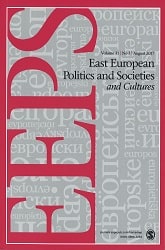Mapping the Post-communist Class Structure. Findings from a New Multidimensional Hungarian Class Survey
Mapping the Post-communist Class Structure. Findings from a New Multidimensional Hungarian Class Survey
Author(s): Fruzsina Albert, Beáta Dávid, Zoltán Kmetty, Luca Kristóf, Péter Róbert, Andrea SzabóSubject(s): Political history, Social history, Government/Political systems, Culture and social structure , Transformation Period (1990 - 2010), Post-Communist Transformation
Published by: SAGE Publications Ltd
Keywords: class structure; post-communism; latent class analysis; Hungary; Bourdieu;
Summary/Abstract: In this article, we define a schema for the class structure of Hungary, in which we consider a case for an Eastern-European capitalist system emerging from post-communist societies. Our schema is based on the findings of the Hungarian Class Survey, 2014. Using six measures of Bourdieusian economic, cultural, and social capital and applying the methodology of latent class analysis (LCA), we have constructed a model of eight LCA-based classes: upper class, cultural middle class, affluent middle class, young urban consumers, network-embedded rural workers, young drifters, middle-aged deprived, and the precariat. Hungarian society seems to be quite hierarchical but is also fragmented within the upper and lower strata. Status inconsistency in terms of possessing economic, cultural, and social capital is strongly present even for the middle classes. There is a clear divide in our class model between the upper four and the lower four classes, in terms of vertical and nonvertical aspects of social stratification. We also compare our new multidimensional class typology to the traditional occupation-based one and demonstrate its added value for class analysis in Hungary.
Journal: East European Politics and Societies
- Issue Year: 32/2018
- Issue No: 03
- Page Range: 544-565
- Page Count: 22
- Language: English
- Content File-PDF

